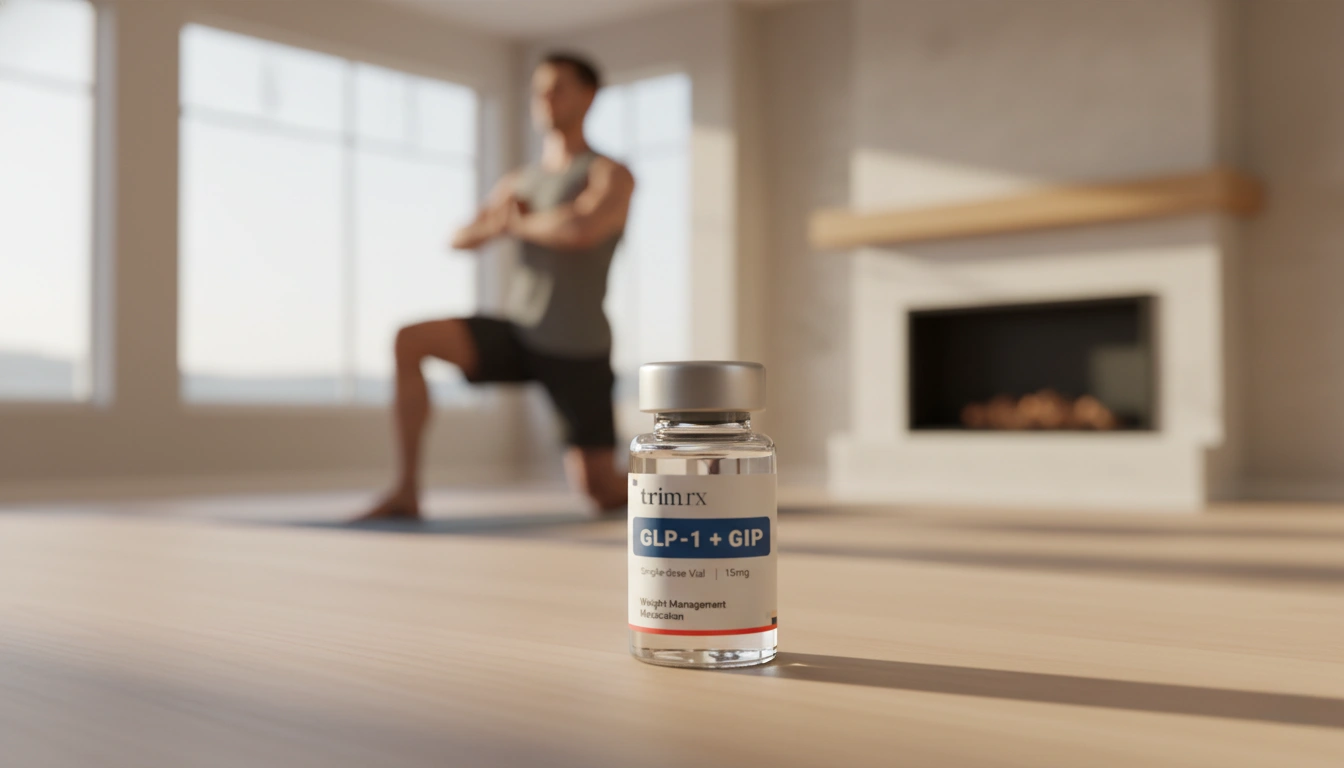How Is GLP-1 Made? Exploring the Journey from Discovery to Therapeutic Use

Have you ever wondered how a simple peptide hormone could revolutionize the treatment of type 2 diabetes and obesity? Glucagon-like peptide-1 (GLP-1) is a remarkable hormone that plays a crucial role in regulating blood sugar levels, enhancing insulin secretion, and even promoting feelings of fullness. The journey of GLP-1 from its discovery in the human body to its current status as a cornerstone in metabolic disease treatment is fascinating and complex.
As we delve into the intricacies of how GLP-1 is made, we will explore its biological origins, the processes that lead to its synthesis, and its transformative effects on health. By the end of this post, you will have a clear understanding of GLP-1’s role in our bodies and how it has become an essential player in modern medicine.
Introduction
GLP-1, a peptide that consists of just 30 amino acids, has become an integral part of our understanding of metabolic health. Historically, it was discovered in the early 1980s when researchers began exploring the role of gut hormones in regulating blood sugar levels. The intricate mechanisms behind its production and function highlight the complexity of our hormonal systems and their impact on health and disease.
In this blog post, we will examine how GLP-1 is generated in the body, the enzymatic processes involved in its synthesis, and the various factors influencing its production. We will also touch upon the therapeutic applications of GLP-1, particularly in the context of type 2 diabetes and obesity management. By understanding the science behind GLP-1, we can better appreciate its significance as a treatment option and how it fits into our broader health journeys.
We invite you to join us as we explore the fascinating world of GLP-1, shedding light on its creation, function, and the potential it holds for improving health outcomes.
The Genesis of GLP-1: Synthesis and Secretion
1. Proglucagon: The Precursor of GLP-1
At the heart of GLP-1 production lies its precursor, proglucagon. This 180-amino acid protein is synthesized primarily in the L-cells of the intestinal mucosa, as well as in the pancreatic alpha cells and neurons of the brain. The proglucagon gene is expressed in various tissues, but its processing is notably tissue-specific.
- Intestinal L-cells: In the gut, proglucagon is cleaved by specific prohormone convertases (PC1/3) to yield several biologically active peptides, including GLP-1 and GLP-2.
- Pancreatic Alpha Cells: In the pancreas, proglucagon is processed differently by prohormone convertase 2 (PC2) to produce glucagon, a hormone that raises blood glucose levels.
2. The Role of Enzymes in GLP-1 Production
The transformation of proglucagon into GLP-1 involves a series of enzymatic reactions:
- Cleavage by Prohormone Convertases: Prohormone convertases, particularly PC1/3 in the gut, cleave proglucagon to produce GLP-1(1-37) and its active form, GLP-1(7-36) amide, which is the biologically active peptide responsible for its physiological effects.
- Modification and Protection: The active forms of GLP-1 are subject to rapid metabolism by the enzyme dipeptidyl peptidase IV (DPP-4), which cleaves the peptide and shortens its half-life to just about 2 minutes. To combat this, pharmaceutical innovations have led to the development of GLP-1 receptor agonists that mimic the action of GLP-1 while being resistant to DPP-4 degradation.
3. Stimuli for GLP-1 Secretion
The secretion of GLP-1 is primarily triggered by food intake:
- Nutrient Sensing: When food enters the gastrointestinal tract, the presence of carbohydrates, fats, and proteins stimulates the L-cells to release GLP-1. This release is crucial for the postprandial regulation of blood glucose levels.
- Gastric Emptying and Insulin Response: GLP-1 slows gastric emptying, leading to a more gradual absorption of nutrients, and enhances insulin secretion from the pancreas in response to elevated blood glucose levels.
4. The Biphasic Secretion Pattern of GLP-1
GLP-1 secretion occurs in a biphasic manner:
- Early Phase: The initial release occurs within minutes of nutrient ingestion, primarily mediated by neural and hormonal signals.
- Late Phase: A second, more sustained phase follows, where GLP-1 secretion continues in response to the ongoing presence of nutrients in the gut. This phase is crucial for maintaining glucose homeostasis.
GLP-1’s Physiological Functions
GLP-1 is not just a hormone with a simple role; it has multiple physiological effects that contribute to its importance in metabolic health:
1. Insulin Secretion and Glucose Control
One of the most significant actions of GLP-1 is its ability to stimulate insulin secretion from pancreatic beta cells in a glucose-dependent manner. This ensures that insulin is released when it is most needed—after meals.
2. Inhibition of Glucagon Secretion
GLP-1 also plays a vital role in inhibiting glucagon secretion from pancreatic alpha cells. This is essential because glucagon increases blood glucose levels, and GLP-1 helps maintain a balanced glucose homeostasis.
3. Appetite Regulation and Weight Management
GLP-1 has been shown to promote satiety and reduce appetite. By acting on receptors in the brain, GLP-1 influences feeding behavior, contributing to weight loss and management, which is particularly beneficial for individuals struggling with obesity.
4. Gastrointestinal Motility
In addition to its endocrine functions, GLP-1 affects gastrointestinal motility by slowing gastric emptying. This not only aids in regulating blood sugar levels but also contributes to feelings of fullness after eating.
5. Cardiovascular Benefits
Emerging research suggests that GLP-1 may have protective effects on the cardiovascular system. It has been associated with improved endothelial function and reduced risk factors for cardiovascular disease, making it a promising area of exploration in metabolic health.
Therapeutic Applications of GLP-1
1. GLP-1 Receptor Agonists in Diabetes Management
The rapid degradation of endogenous GLP-1 in the body has led to the development of GLP-1 receptor agonists, which are designed to mimic the actions of GLP-1 while being resistant to DPP-4.
- Examples of GLP-1 Receptor Agonists: Medications such as liraglutide, semaglutide, and exenatide have been developed and approved for the treatment of type 2 diabetes. These drugs help improve glycemic control and promote weight loss, making them critical advancements in diabetes management.
2. Obesity Treatment
GLP-1 receptor agonists have also gained attention for their role in weight management. By promoting satiety and reducing appetite, these medications can assist individuals in achieving and maintaining a healthier weight.
3. Cardiovascular Disease and GLP-1
Recent studies have highlighted the cardiovascular benefits of GLP-1 receptor agonists, showing that these medications can reduce the risk of major cardiovascular events in individuals with type 2 diabetes.
Conclusion
The journey of GLP-1 from its origins in the body to its role as a transformative therapeutic agent exemplifies the power of scientific research and innovation in medicine. By understanding how GLP-1 is made and its physiological functions, we can appreciate the therapeutic potential it holds in managing diabetes, obesity, and cardiovascular health.
As we continue to explore the applications of GLP-1, we at TrimRx remain committed to providing personalized, medically supervised weight loss solutions that incorporate the latest research and advancements in the field. If you’re interested in learning more about our weight loss programs, we encourage you to take our free assessment quiz to see if you qualify for our prescription weight loss medications.
FAQ
What is GLP-1?
GLP-1, or glucagon-like peptide-1, is a hormone produced in the intestine that helps regulate blood sugar levels by stimulating insulin secretion and inhibiting glucagon release.
How is GLP-1 made in the body?
GLP-1 is synthesized from proglucagon, a precursor protein, through enzymatic cleavage in the intestinal L-cells.
What are the primary functions of GLP-1?
GLP-1 promotes insulin secretion, inhibits glucagon release, slows gastric emptying, and reduces appetite, contributing to better blood sugar control and weight management.
How do GLP-1 receptor agonists work?
GLP-1 receptor agonists mimic the action of GLP-1 by stimulating insulin secretion and reducing appetite, while being resistant to degradation by DPP-4.
Are there any side effects associated with GLP-1 medications?
Common side effects may include nausea, vomiting, diarrhea, and potential gastrointestinal discomfort, but these symptoms often improve over time.
If you have any further questions or would like to explore our programs for personalized weight loss solutions, please reach out to us! Together, we can work towards achieving a healthier lifestyle.

Transforming Lives, One Step at a Time
Keep reading
Vitamin B12 and GLP-1 Medications: What to Know
GLP-1 medications can lower B12 absorption and intake; learn symptoms, food sources, supplement options, and how to monitor levels.
Semaglutide Injection Site Reactions: What To Know
Learn why semaglutide injections can cause redness, swelling or nodules, how to prevent and treat them, and when to seek medical care.
TrimRx vs Friday’s
Compare TrimRx and Friday’s telehealth GLP-1 weight-loss programs: pricing, medical support, coaching, delivery, and which fits your needs.



